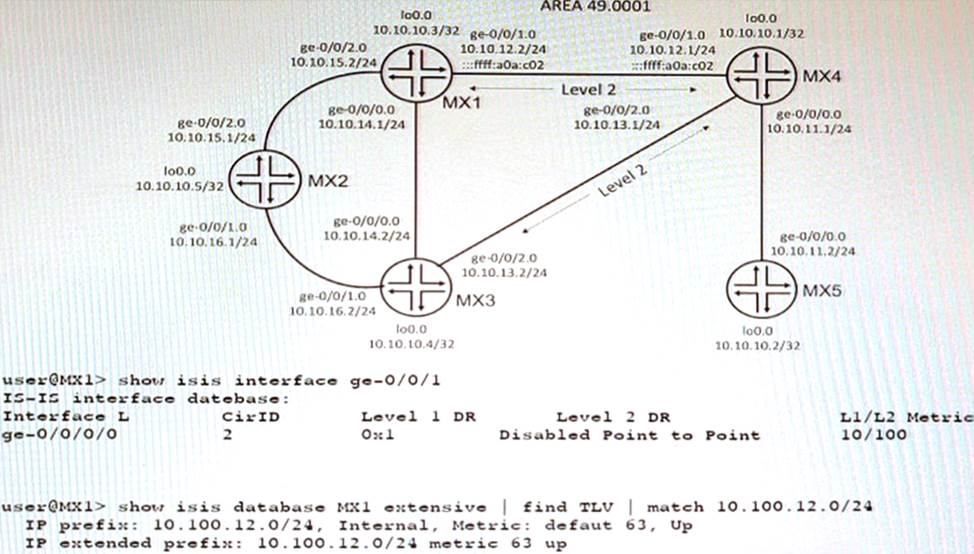In this scenario, why are there two TLVs shown in the exhibit?
Exhibit

A network is using IS-IS for routing.
In this scenario, why are there two TLVs shown in the exhibit?
A . There are both narrow and wide metric devices in the topology
B . The interface specified a metric of 100 for L2.
C . Wide metrics have specifically been requested
D . Both IPv4 and IPv6 are being used in the topology
Answer: A
Explanation:
TLVs are tuples of (Type, Length, Value) that can be advertised in IS-IS packets. TLVs can carry different kinds of information in the Link State Packets (LSPs). IS-IS supports both narrow and wide metrics for link costs. Narrow metrics use a single octet to encode the link cost, while wide metrics use three octets. Narrow metrics have a maximum value of 63, while wide metrics have a maximum value of 16777215. If there are both narrow and wide metric devices in the topology, IS-IS will advertise two TLVs for each link: one with the narrow metric and one with the wide metric. This allows backward compatibility with older devices that only support narrow metrics12.
Latest JN0-664 Dumps Valid Version with 65 Q&As
Latest And Valid Q&A | Instant Download | Once Fail, Full Refund

